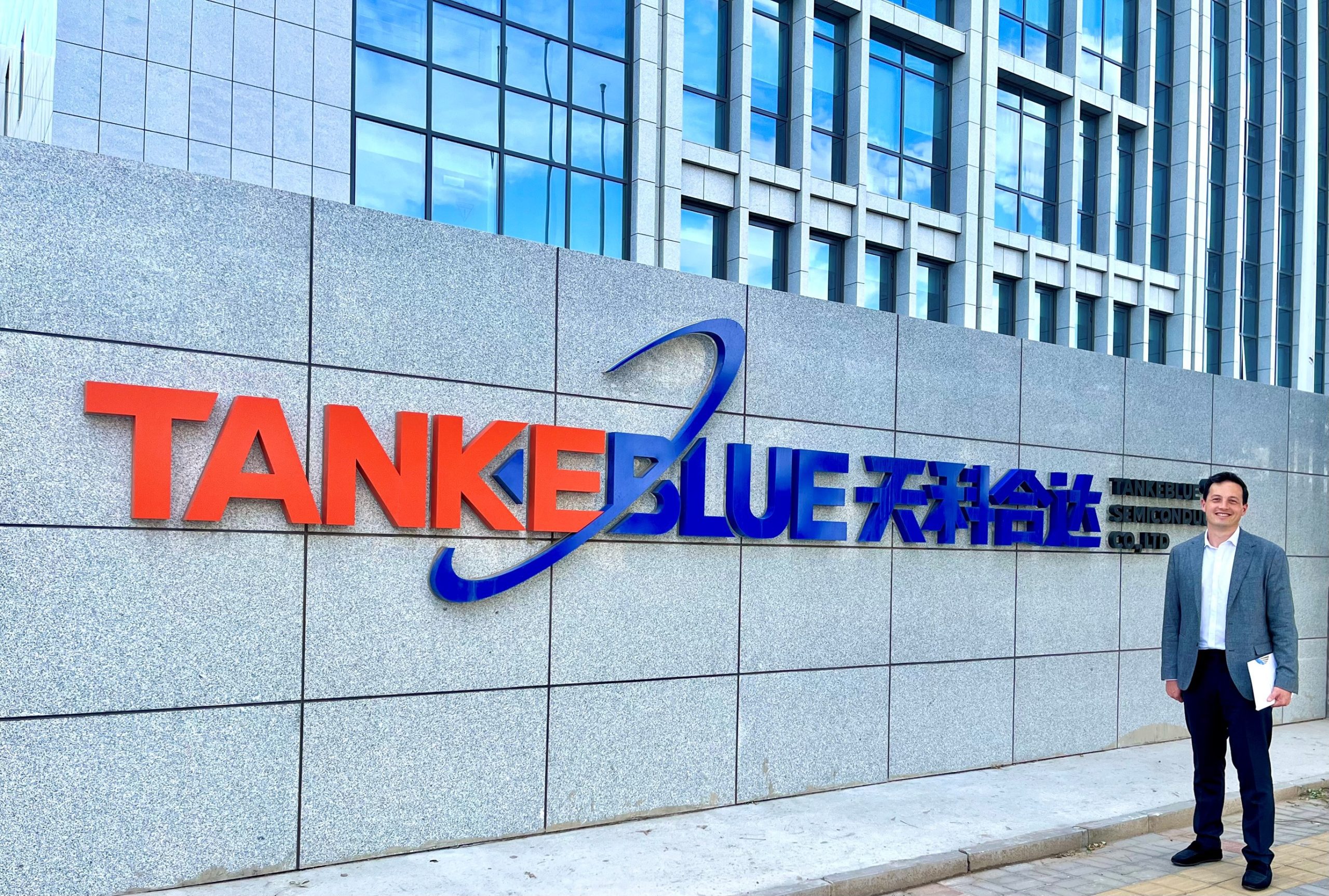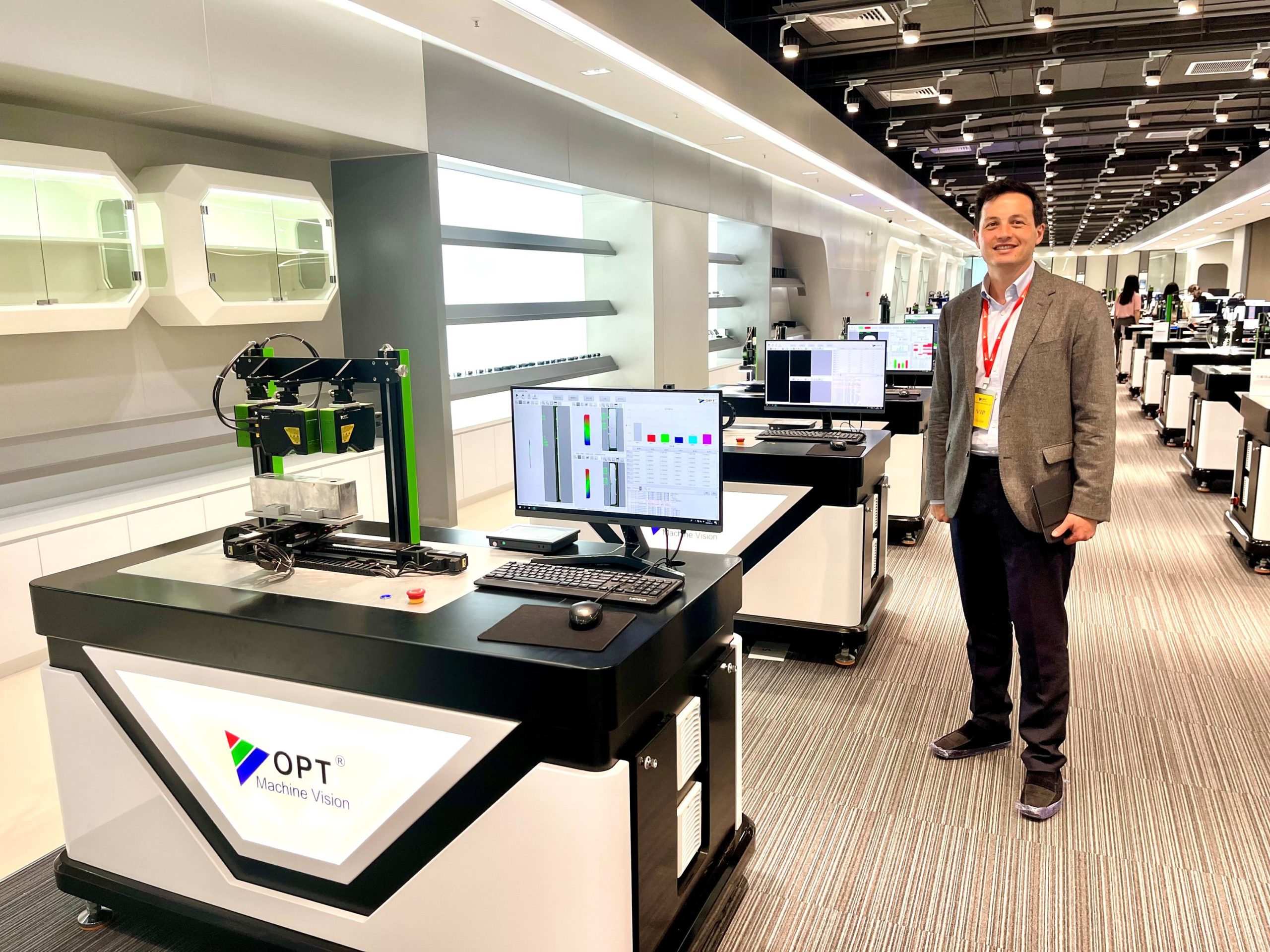JH Explorer in China: In the driving seat of tech progress
Global technology portfolio manager Richard Clode returns from a recent trip to China highly impressed by tech adoption and the advances companies are making towards a more sustainable world.

6 minute read
Key takeaways:
- China’s technology advancement has continued despite the pandemic and geopolitical challenges.
- China has grand ambitions in silicon carbide (SiC), a key enabling technology for electric vehicles, as well as renewable energy.
- Semiconductor shortages post COVID and onshoring to circumvent geopolitical concerns are supporting share gains, aided by the rising technological capabilities of these companies.
| The JH Explorer series follows our investment teams across the globe and shares their on-the-ground research at a country and company level. |
Beijing ring road traffic jams, bustling domestic airports and train stations were a reminder of thankfully how fast life has returned to normal since reopening about six months ago. The inexorable migration to Tencent’s Weixin (WeChat) ecosystem (like Facebook, Whatsapp, Paypal and Amazon rolled into one) continues as I discovered how hard it is to even order a coffee outside of a mini programme (sub-app within a larger app), pay with anything other than WePay, or communicate with companies outside of WeChat. My printed business cards were met with polite bemusement. Short video has become a global phenomenon but was pioneered in China by ByteDance’s Douyin (China’s TikTok) – the daily time spent watching there would give Western parents nightmares!
China’s tech industry is marching forward
So far so predictable, but I was intrigued to find out after a four-year enforced absence, what in the technology sector had really changed. Certainly, China’s technology advancement has not stood still despite geopolitical challenges. Within hours of landing, I was being driven around by a Pony.ai robotaxi with no safety driver. It expertly navigated the large pilot zone in Beijing at speed despite heavy traffic, encountering a variety of people, bikes, mopeds, buses and even autonomous delivery vehicles, with some human drivers showing scant regard for local traffic laws.
My robotaxi experience in Beijing
Robotaxi zones have launched in four cities and Shenzhen has just issued a citywide permit as this technology finally moves forward globally after too many years of hype, In the US, robotaxis are also appearing in more cities and are now available on the Uber ride-hailing platform.
Sustainable transport is moving closer to becoming a reality
Ride hailing, autonomous vehicles and electric vehicles (EVs) are some of the sub-themes within our wider Sustainable Transport mega theme, making transportation safer, greener, connected and more accessible. These are all areas that are undoubtedly creating some exciting opportunities, but to deliver long-term returns for investors we believe it is essential to focus on those companies that have strong competitive moats and maintain valuation discipline. This is complemented by our approach to sustainable investing, which is thoughtful, practical, research-driven and forward-looking.
China has grand ambitions in silicon carbide (SiC) and renewable energy. The former is a key enabling technology for EVs, where Tesla was an early adopter, while for the latter, China has pledged to reach peak carbon by 2030, with around 25% of energy consumption from non-fossil fuels. Avoiding leading edge semiconductor manufacturing and with less sensitive end markets, this is a technology that appears to be at lower risk from geopolitical concerns. German semiconductor giant Infineon Technologies surprised investors in late 2022 by claiming it could source SiC wafers from China with comparable quality, but at a significant discount to current market prices. Infineon has since signed contracts with China semis TankeBlue and SICC, both of which I visited and came away highly impressed with their capabilities and ambitions.

TankeBlue, a leading manufacturer of SiC wafers.
Local capital markets and government subsidies are funding significant expansion plans for these local SiC wafer suppliers. This gives me confidence that current shortages will soon be alleviated, with analysts forecasting a six-fold increase in Chinese capacity from 2022 to 2025 to almost 45% of global SiC wafer supply.* STMicroelectronics recently signed a joint venture with Sanan, which I visited in Xiamen. Along with several other companies I visited, there are ambitions to move downstream into SiC devices. As this is technology with a much higher entry barrier it remains to be seen if they will be successful. With China being by far the largest electric vehicle (EV) market globally, with a rising share of local EV brands keen to source SiC domestically, there are many willing buyers if these companies can conquer the technology.
Semis benefiting from China onshoring
I also met with several Chinese analog and power semiconductor companies. Semiconductors are a key component to develop and deploy clean energy, as well as improving the energy efficiency of many electronic devices. Semiconductor shortages caused by the COVID-19 pandemic made the domestic market more willing to adopt local suppliers, and geopolitical concerns are helping to lock in those share gains aided by the rising technological capabilities of these companies. These are predominantly fabless companies (chip designers) reliant on domestic foundries that are manufacturing using lagging/trailing edge semiconductor equipment. Such companies are generally less affected by US export restrictions and so are consequently benefiting from unprecedented lagging edge semiconductor capital spending. This has been called out by every major semiconductor equipment globally and has been a key reason why this downcycle has been more muted despite the wider industry malaise.
Sustainability is the question as there are many companies expanding and not all of them will be successful. However, there is more opportunity for domestic equipment makers to take market share in the lagging edge semiconductors sector. NAURA, which I also visited, is by far the largest domestic player.

Machine vision tools are improving manufacturing yields and reducing wastage.
The advance of technology in China continues unabated despite some recent challenges. Geopolitics will create risks but also opportunities. We think it is important for investors to be on the ground, meeting face-to-face with companies and supply chains to understand these complexities and how best to invest for clients.
*Arete Research Company, FactSet as at June 2023. There is no guarantee that forecasts will be realised.
Leading edge and lagging (trailing edge) semiconductors: leading edge chips are manufactured using the most advanced technology and are used to power cloud supercomputers, powerful servers, laptops and PCs. Lagging or trailing edge chips form the bulk of semiconductor capacity, used in other components including vehicles, medical devices, smartphones and televisions.
IMPORTANT INFORMATION
Technology industries can be significantly affected by obsolescence of existing technology, short product cycles, falling prices and profits, competition from new market entrants, and general economic conditions. A concentrated investment in a single industry could be more volatile than the performance of less concentrated investments and the market.
Sustainable or Environmental, Social and Governance (ESG) investing considers factors beyond traditional financial analysis. This may limit available investments and cause performance and exposures to differ from, and potentially be more concentrated in certain areas than the broader market.
Queste sono le opinioni dell'autore al momento della pubblicazione e possono differire da quelle di altri individui/team di Janus Henderson Investors. I riferimenti a singoli titoli non costituiscono una raccomandazione all'acquisto, alla vendita o alla detenzione di un titolo, di una strategia d'investimento o di un settore di mercato e non devono essere considerati redditizi. Janus Henderson Investors, le sue affiliate o i suoi dipendenti possono avere un’esposizione nei titoli citati.
Le performance passate non sono indicative dei rendimenti futuri. Tutti i dati dei rendimenti includono sia il reddito che le plusvalenze o le eventuali perdite ma sono al lordo dei costi delle commissioni dovuti al momento dell'emissione.
Le informazioni contenute in questo articolo non devono essere intese come una guida all'investimento.
Comunicazione di Marketing.
Important information
Please read the following important information regarding funds related to this article.
- Le Azioni/Quote possono perdere valore rapidamente e normalmente implicano rischi più elevati rispetto alle obbligazioni o agli strumenti del mercato monetario. Di conseguenza il valore del proprio investimento potrebbe diminuire.
- Le azioni di società a piccola e media capitalizzazione possono presentare una maggiore volatilità rispetto a quelle di società più ampie e talvolta può essere difficile valutare o vendere tali azioni al momento e al prezzo desiderati, il che aumenta il rischio di perdite.
- Un Fondo che presenta un’esposizione elevata a un determinato paese o regione geografica comporta un livello maggiore di rischio rispetto a un Fondo più diversificato.
- Il Fondo si concentra su determinati settori o temi d’investimento e potrebbe risentire pesantemente di fattori quali eventuali variazioni ai regolamenti governativi, una maggiore competizione nei prezzi, progressi tecnologici ed altri eventi negativi.
- Il Fondo si attiene a un approccio d’investimento sostenibile, il che potrebbe condurlo ad essere sovrappesato e/o sottopesato in alcuni settori e pertanto ad ottenere performance diverse da quelli di fondi con obiettivi analoghi, ma che non si avvalgono di criteri d’investimento sostenibile per la selezione dei titoli.
- Il Fondo potrebbe usare derivati al fine di ridurre il rischio o gestire il portafoglio in modo più efficiente. Ciò, tuttavia, comporta rischi aggiuntivi, in particolare il rischio che la controparte del derivato non adempia ai suoi obblighi contrattuali.
- Qualora il Fondo detenga attività in valute diverse da quella di base del Fondo o l'investitore detenga azioni o quote in un'altra valuta (a meno che non siano "coperte"), il valore dell'investimento potrebbe subire le oscillazioni del tasso di cambio.
- Se il Fondo, o una sua classe di azioni con copertura, intende attenuare le fluttuazioni del tasso di cambio tra una valuta e la valuta di base, la stessa strategia di copertura potrebbe generare un effetto positivo o negativo sul valore del Fondo, a causa delle differenze di tasso d’interesse a breve termine tra le due valute.
- I titoli del Fondo potrebbero diventare difficili da valutare o da vendere al prezzo e con le tempistiche desiderati, specie in condizioni di mercato estreme con il prezzo delle attività in calo, aumentando il rischio di perdite sull'investimento.
- Il Fondo potrebbe perdere denaro se una controparte con la quale il Fondo effettua scambi non fosse più intenzionata ad adempiere ai propri obblighi, o a causa di un errore o di un ritardo nei processi operativi o di una negligenza di un fornitore terzo.
Specific risks
- Le Azioni/Quote possono perdere valore rapidamente e normalmente implicano rischi più elevati rispetto alle obbligazioni o agli strumenti del mercato monetario. Di conseguenza il valore del proprio investimento potrebbe diminuire.
- Un Fondo che presenta un’esposizione elevata a un determinato paese o regione geografica comporta un livello maggiore di rischio rispetto a un Fondo più diversificato.
- Il Fondo si concentra su determinati settori o temi d’investimento e potrebbe risentire pesantemente di fattori quali eventuali variazioni ai regolamenti governativi, una maggiore competizione nei prezzi, progressi tecnologici ed altri eventi negativi.
- Questo Fondo può avere un portafoglio particolarmente concentrato rispetto al suo universo d’investimento o altri fondi del settore. Un evento sfavorevole riguardante anche un numero ridotto di partecipazioni potrebbe creare una notevole volatilità o perdite per il Fondo.
- Il Fondo potrebbe usare derivati al fine di ridurre il rischio o gestire il portafoglio in modo più efficiente. Ciò, tuttavia, comporta rischi aggiuntivi, in particolare il rischio che la controparte del derivato non adempia ai suoi obblighi contrattuali.
- Qualora il Fondo detenga attività in valute diverse da quella di base del Fondo o l'investitore detenga azioni o quote in un'altra valuta (a meno che non siano "coperte"), il valore dell'investimento potrebbe subire le oscillazioni del tasso di cambio.
- Se il Fondo, o una sua classe di azioni con copertura, intende attenuare le fluttuazioni del tasso di cambio tra una valuta e la valuta di base, la stessa strategia di copertura potrebbe generare un effetto positivo o negativo sul valore del Fondo, a causa delle differenze di tasso d’interesse a breve termine tra le due valute.
- I titoli del Fondo potrebbero diventare difficili da valutare o da vendere al prezzo e con le tempistiche desiderati, specie in condizioni di mercato estreme con il prezzo delle attività in calo, aumentando il rischio di perdite sull'investimento.
- Il Fondo potrebbe perdere denaro se una controparte con la quale il Fondo effettua scambi non fosse più intenzionata ad adempiere ai propri obblighi, o a causa di un errore o di un ritardo nei processi operativi o di una negligenza di un fornitore terzo.

